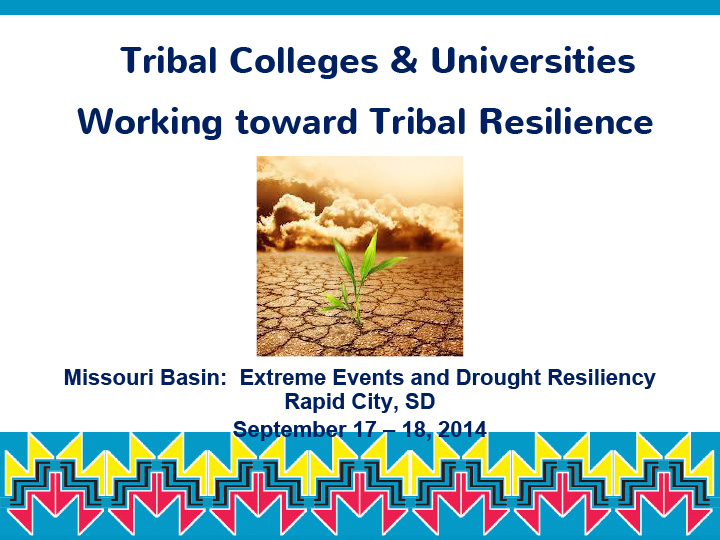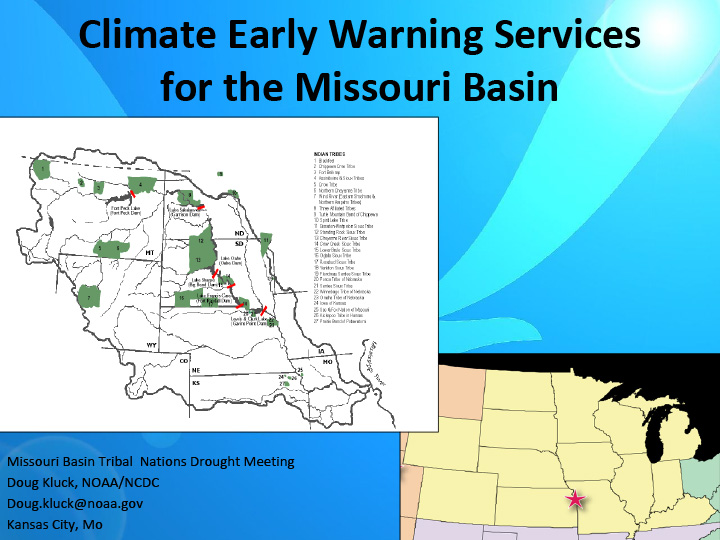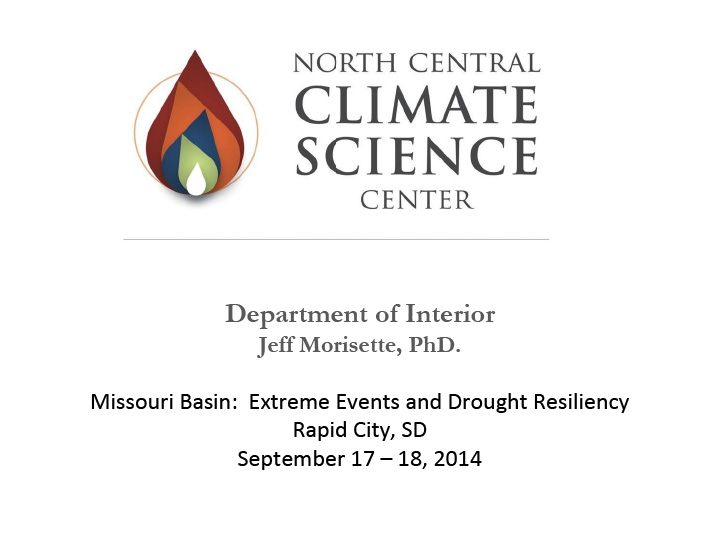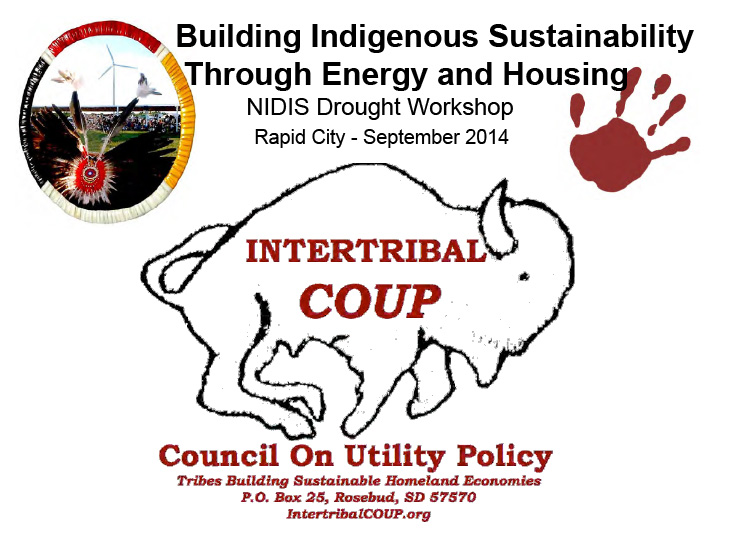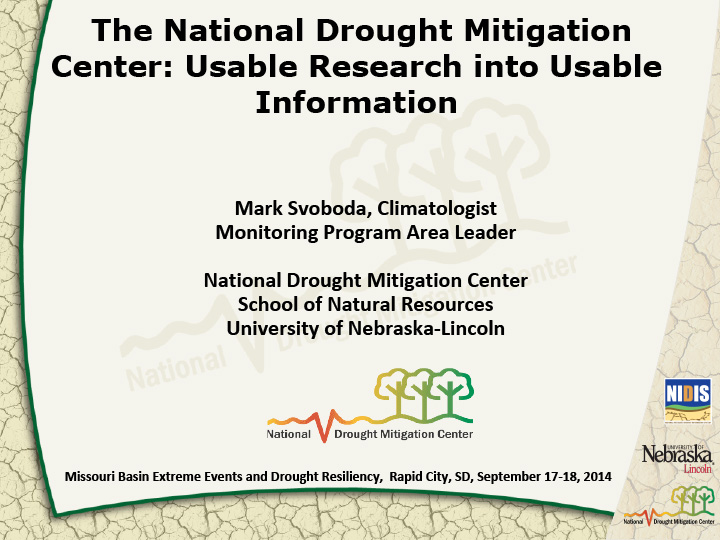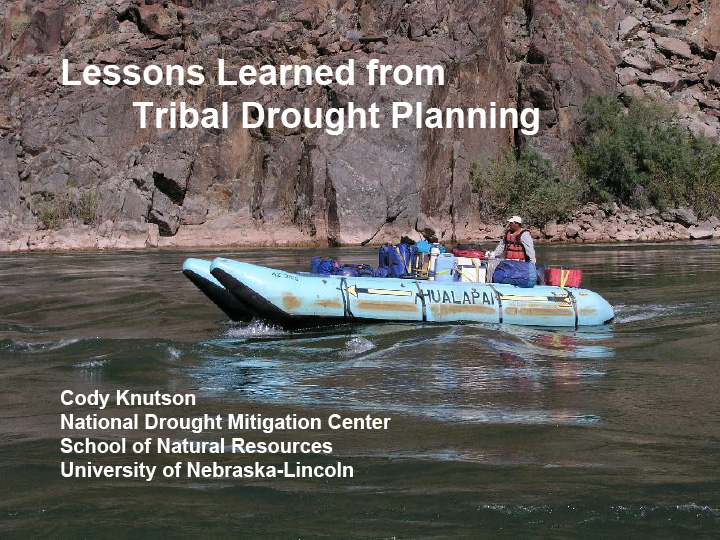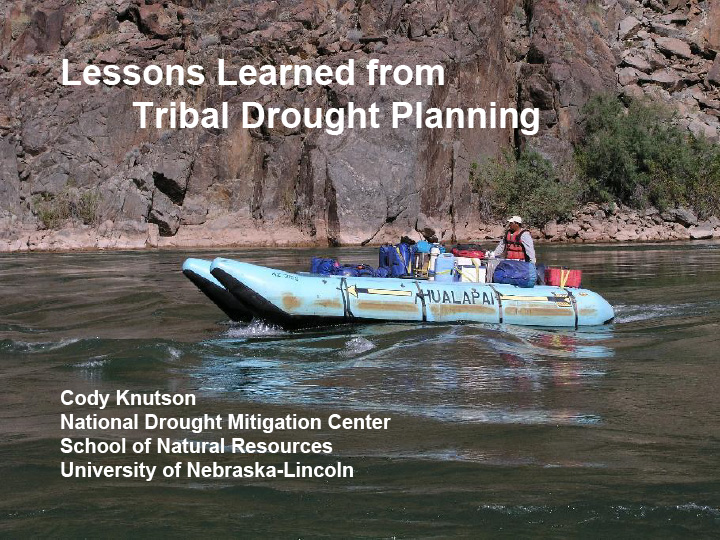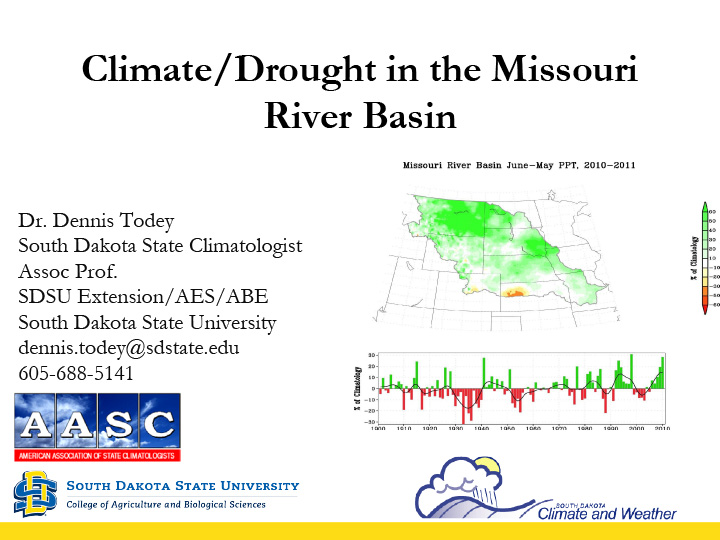A presentation by Al Kuslikis of the American Indian Higher Education Consortium that took place during the Extreme Events and Drought Resiliency workshop in Rapid City, South Dakota September 17-18, 2014. Presentation discusses the role tribal colleges and universities (TCUS) can play in monitoring drought conditions and responding to them.
Presentation given at the Extreme Events and Drought Resiliency workshop held September 17-18, 2014 in Rapid City, South Dakota. Presentation discusses the climate in the region where the Kickapoo Tribe resides, including extreme weather events and the major droughts that occurred in 2000 and 2003. Presentation goes on to talk about what is required in order for the tribe to be able to react to drought conditions that might spring up in the future.
Presentation given at the Extreme Events and Drought Resiliency workshop held September 17-18, 2014 in Rapid City, South Dakota. Discusses extreme weather events that have occurred in the Missouri River Basin over the last decade and the damage they caused. Presentation also provides various resources for stakeholders that deal with weather and drought in the High Plains.
Presentation from the Extreme Events and Drought Resiliency workshop September 17-18, 2014 in Rapid City, South Dakota. Discusses how climate research organizations are organized regionally. Closes slideshow by touching on the role Traditional Knowledge can play in climate monitoring.
A presentation by Bob Gough of the Council on Utility Policy (COUP) that was presented at the Extreme Events and Drought Resiliency tribal engagement workshop held in Rapid City, South Dakota September 17-18, 2014.
Presentation given by Mark Svoboda of the National Drought Mitigation at the Extreme Events and Drought Resiliency Workshop held in Rapid City, South Dakota on November 17-18, 2014. Presentation discusses how data can be taken and synthesized for use in informing for the Drought Early Warning System.
A slideshow that was presented by Cody Knutson of the National Drought Mitigation Center during the Extreme Events and Drought Resiliency tribal engagement workshop in Rapid City, South Dakota on September 17-18, 2014. Purpose of the presentation was to highlight some of the lessons learned about drought planning using the Hualapai Tribe and their experiences as a case study.
A slideshow that was presented by Cody Knutson of the National Drought Mitigation Center during the Extreme Events and Drought Resiliency tribal engagement workshop in Rapid City, South Dakota on September 17-18, 2014. Purpose of the presentation was to highlight some of the lessons learned about drought planning using the Hualapai Tribe and their experiences as a case study.
A presentation by Dr. Dennis Todey that was presented at a tribal engagement workshop called Extreme Events and Drought Resiliency that took place in Rapid City, South Dakota September 17-18, 2014. Provides a good deal of data on the climate of the region and the United States as a whole.
Presentation given at the Extreme Events and Drought Resiliency workshop held September 17-18, 2014 in Rapid City, South Dakota. Discusses the Plains Cottonwood and how it is being adversely affected by the invasive Russian Olive. Presentation talks about some of the traditional uses of Plains Cottonwood and then uses data from a study on the Crow Reservation in southern Montana to show the impacts of invasive plant species on the native cottonwood.


